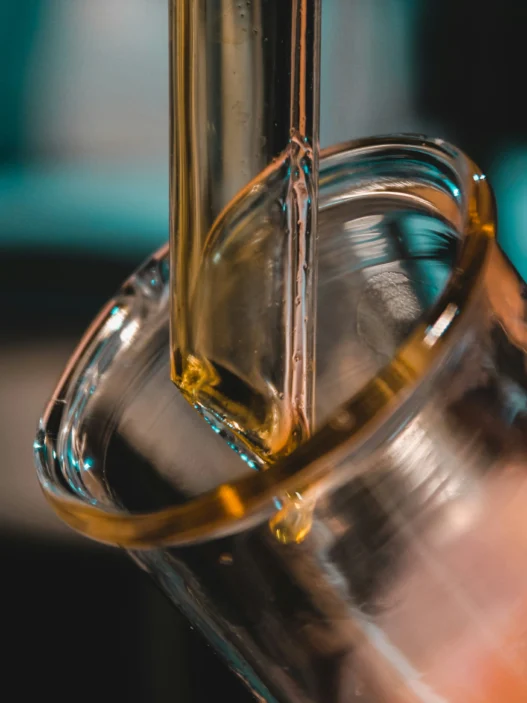O-Anisidine is a chemical compound with various industrial applications, particularly in the production of dyes and pigments. Its relevance to everyday life lies in its use in the manufacture of colored fabrics, paints, inks, and plastics that are commonly encountered in consumer products. While most individuals may not be familiar with O-Anisidine specifically, its presence in these everyday items underscores its impact on the appearance and functionality of numerous products that we use on a daily basis.
Table of Contents:
- 💡 Commercial Applications
- ⚗️ Chemical & Physical Properties
- 🏭 Production & Procurement
- ⚠️ Safety Considerations
- 🔬 Potential Research Directions
- 🧪 Related Compounds
💡 Commercial Applications
O-Anisidine, also known as 2-methoxyaniline, is a chemical compound commonly used in various commercial and industrial applications. Its primary use is as an intermediate in the production of dyes, pigments, and pharmaceuticals. O-Anisidine is also utilized as a precursor in the synthesis of antioxidants, herbicides, and fungicides due to its reactivity and stability.
In addition to its commercial and industrial applications, O-Anisidine has found relevance in the pharmaceutical industry for its potential medicinal properties. This compound is used in the synthesis of various drugs and medications, including antipyretic and analgesic agents. O-Anisidine’s properties have also been studied for its potential use in the treatment of certain diseases and conditions, showcasing its versatility and importance in the field of medicine.
⚗️ Chemical & Physical Properties
O-Anisidine is a colorless to pale yellow liquid with a slightly unpleasant odor. It is commonly used as an intermediate in the production of dyes, pharmaceuticals, and agricultural chemicals.
The molar mass of O-Anisidine is approximately 123.15 g/mol, with a density of around 1.08 g/cm³. In comparison, common food items like sugar and salt have higher molar masses and densities, making O-Anisidine less dense and lighter.
O-Anisidine has a melting point of around -18°C and a boiling point of approximately 232°C. This is significantly higher than the melting and boiling points of common food items like butter and olive oil, making O-Anisidine more stable at higher temperatures.
O-Anisidine is sparingly soluble in water and exhibits a relatively low viscosity. Compared to common food items like vinegar and honey, which are highly soluble and viscous, O-Anisidine has lower solubility and viscosity properties.
🏭 Production & Procurement
O-Anisidine is primarily produced through the methylation of p-anisidine. This process involves the reaction of p-anisidine with dimethyl sulfate or dimethyl carbonate in the presence of a base catalyst, such as sodium hydroxide. The resulting product is then purified through methods such as distillation or recrystallization to obtain pure O-Anisidine.
O-Anisidine can be procured from chemical manufacturers or suppliers who specialize in the production and distribution of aromatic amines. The compound is typically available in both bulk quantities for industrial use and smaller quantities for research and laboratory purposes. During transportation, O-Anisidine is usually handled with care due to its toxic and flammable nature, and it is often packaged in sealed containers to prevent leakage or spillage.
When procuring O-Anisidine, it is important to adhere to strict safety protocols and guidelines to ensure the proper handling and storage of the compound. Proper documentation, such as Material Safety Data Sheets (MSDS), must be provided by the supplier to inform users of the hazards associated with O-Anisidine and the necessary precautions to take when working with the substance. Additionally, appropriate safety equipment and measures should be implemented when transporting O-Anisidine to prevent exposure and accidents.
⚠️ Safety Considerations
Safety considerations for O-Anisidine include its classification as a hazardous substance due to its potential to cause skin and eye irritation. It is also considered harmful if swallowed, inhaled, or absorbed through the skin. Therefore, appropriate precautions must be taken when handling this chemical, such as wearing protective gloves, clothing, and eyewear to minimize exposure.
Hazard statements for O-Anisidine include “Causes skin and eye irritation” and “Harmful if swallowed, inhaled, or absorbed through the skin.” These statements indicate the potential dangers associated with exposure to this chemical. It is important to handle O-Anisidine with care and follow proper safety protocols to avoid adverse health effects.
Precautionary statements for O-Anisidine include measures such as wearing protective gloves, clothing, and eyewear when handling the chemical. It is also recommended to avoid breathing in vapors or mists, as well as avoiding contact with skin and eyes. In case of ingestion, seek medical advice immediately and have the product container or label on hand. These precautions should be strictly followed to ensure safe handling of O-Anisidine.
🔬 Potential Research Directions
One potential research direction for O-Anisidine involves exploring its potential as a precursor in the synthesis of various organic compounds, particularly in the pharmaceutical and agrochemical industries.
Another research avenue for O-Anisidine may involve investigating its reactivity and potential applications in organic reactions, such as its role as a versatile building block in the synthesis of dyes, pigments, and other high-value chemicals.
Additionally, further studies could focus on the toxicological properties of O-Anisidine, examining its potential adverse effects on human health and the environment, as well as developing strategies for its safe handling and disposal in industrial processes.
🧪 Related Compounds
One similar compound to O-Anisidine is p-Anisidine, also known as 4-Anisidine. Its molecular structure is similar to O-Anisidine, with the anisidine group substituent located on the para position of the phenyl ring. p-Anisidine is commonly used in the manufacturing of dyes, pigments, and pharmaceuticals.
Another similar compound is m-Anisidine, or 3-Anisidine. Its molecular structure is analogous to O-Anisidine, with the anisidine group substituent attached to the meta position of the phenyl ring. m-Anisidine finds applications in the production of dyes, pigments, and organic intermediates.
Additionally, 2-Anisidine, or o-Anisidine, shares a comparable molecular structure with O-Anisidine, with the anisidine group positioned at the ortho position of the phenyl ring. 2-Anisidine is utilized in the synthesis of azo dyes, pharmaceuticals, and other organic compounds. These compounds exhibit similar reactivity and chemical properties due to their shared structural characteristics.





